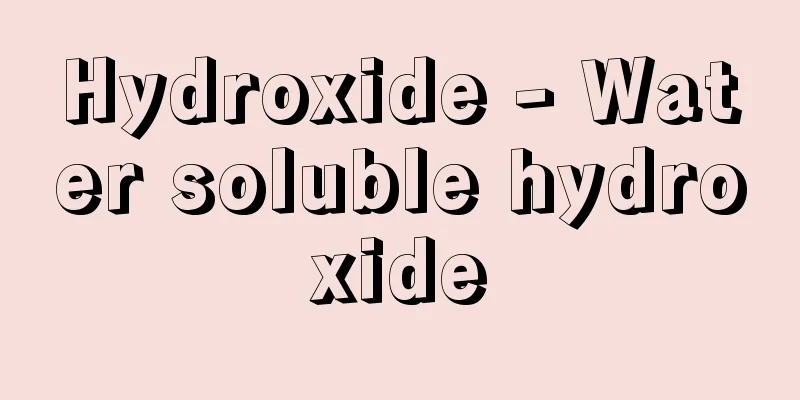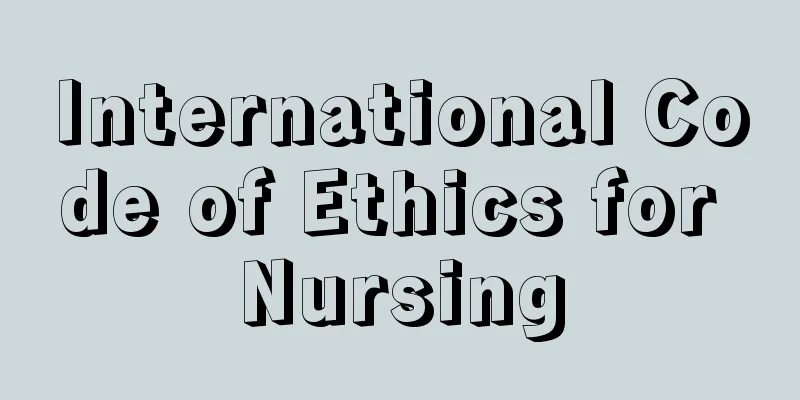Hydroxide - Water soluble hydroxide

|
It refers to compounds that contain OH as a component, such as the general formula M(OH), M(OH) 2 , M(OH) 3 , etc. It corresponds to oxide hydrates M 2 O·H 2 O, MO·H 2 O, M 2 O 3 ·3H 2 O. It usually refers only to basic compounds. That is, nonmetallic oxides or oxides with higher oxidation numbers, such as transition metals, can be formally written as hydroxides when combined with water, but they are not called hydroxides because they actually exhibit acidic properties. For example, B 2 O 3 ·3H 2 O can be written as B(OH) 3 , N 2 O 3 ·H 2 O can be written as NO(OH), and CrO 3 ·H 2 O can be written as CrO 2 (OH) 2 , but in reality they are acids, such as boric acid, nitrous acid, and chromic acid. Hydrates formed from amphoteric oxides, such as SnO 2 ·nH 2 O, are called both tin(IV) hydroxide and stannic acid. Hydroxides of metals with strong electropositive properties consist of metal ions and hydroxide ions (OH- ) . OH- is easily polarized, and as the electropositive property of the metal decreases, the bond between it and O becomes more covalent, eventually forming a macromolecule with a layered structure (for example, Al(OH) 3 or Cr(OH) 3 ). Alkali metal hydroxides are typical bases, and their aqueous solutions are strongly alkaline. As the electropositive property of the metal decreases and the oxidation number of the metal ion increases, the basicity weakens. At the same time, the solubility in water also decreases. NaOH, KOH, RbOH, and CsOH are deliquescent, LiOH, Ba(OH) 2 , and Sr(OH) 2 are quite soluble, and Ca(OH) 2 and La(OH) 3 are slightly soluble, and all of them are strongly alkaline. Organic compounds with an OH group are called hydroxy compounds. [Nakahara Katsunori] [Reference item] |Source: Shogakukan Encyclopedia Nipponica About Encyclopedia Nipponica Information | Legend |
|
一般式M(OH), M(OH)2, M(OH)3などのように成分としてOHを含む化合物をいう。酸化物の水和物M2O・H2O,MO・H2O,M2O3・3H2Oに相当する。普通は塩基性の化合物のみをいう。すなわち、非金属の酸化物あるいはたとえば遷移金属の高酸化数酸化物は、水と化合して形式的には水酸化物の形に書けるが、実際は酸の性質を示すので水酸化物とはいわない。たとえば、B2O3・3H2OはB(OH)3、N2O3・H2OはNO(OH)、CrO3・H2OはCrO2(OH)2と書けはするが、実際にはホウ酸、亜硝酸、クロム酸などのように酸である。両性酸化物から生ずる水和物では、たとえばSnO2・nH2Oのように水酸化スズ(Ⅳ)、スズ酸のように両様によばれる。 陽性の強い金属の水酸化物は、金属イオンと水酸化物イオンOH-とからなるが、OH-は分極しやすく、金属の陽性が減少するとともに、Oとの間の結合は共有性を増し、ついには層状構造の巨大分子となる(たとえばAl(OH)3やCr(OH)3など)。アルカリ金属の水酸化物は代表的な塩基で、その水溶液は強アルカリ性を示す。金属の陽性が減少し、金属イオンの酸化数が増大すると塩基性が弱くなる。またそれとともに水に対する溶解度も減少する。NaOH, KOH, RbOH, CsOHは潮解性、LiOH, Ba(OH)2, Sr(OH)2はかなり溶け、Ca(OH)2, La(OH)3はわずかに溶け、いずれも強アルカリである。なお、有機化合物でOH基をもつものは、ヒドロキシ化合物とよんでいる。 [中原勝儼] [参照項目] |出典 小学館 日本大百科全書(ニッポニカ)日本大百科全書(ニッポニカ)について 情報 | 凡例 |
<<: Magnesium Hydroxide - Magnesium Suisanka
Recommend
Category record - Buriki
These are diaries in which entries on specific mat...
Kanjo Scroll - Kanjo no Maki
A classification of Heikyoku repertoire. It refers...
Preparatory school - Yobiko
An educational institution that specializes in pr...
Liquid surface combustion
… In the case of liquids and solids, the spread o...
Contiguous zone
A contiguous zone is a zone of water adjacent to t...
Zapotilla
...There is also a theory that the name comes fro...
Dry farming - Kansou no Ugyo
...This refers to a farming method that does not ...
Cottage pink
...It is a cushion-like perennial plant with a sl...
Geum chiloense (English spelling)
…[Yamanaka Futoshi]. … *Some of the terminology t...
Sadyattēs (English spelling)
...In the early 7th century BC, Gyges (reigned 68...
Salez
…Axes with a rim height of 1-2 mm are called low-...
Albertinelli, Mariotto
Born: October 13, 1474, Florence Died November 5, ...
Accelerated Creep - Kasokukuriipu
…The region where the rate of deformation gradual...
External Line Operation - Guysensky
To carry out operations in a position that surroun...
Hotaka [town] - Hotaka
A former town in Minamiazumi district, western Nag...








![Inaccessible [island] - Inaccessible](/upload/images/67cf6bcd6c218.webp)
